Settlements > Persepolis
Persepolis
Background
Persepolis was the once luxurious capital of the ancient Achaemenid Empire that only lasted about 200 years before it was brutally razed to the ground by Alexander the Great and his companions. Despite its short existence the memory of Persepolis is still vivid throughout the Middle East as it was a glittering city of massive wealth and luxury built on the top of mountain that had been manually leveled off. The city was as opulent as ever recorded in history. There were massive palaces with huge staircases and floors trimmed with gold and other precious metals. There were pillars, monuments and statues all depicting the rich and beautiful cultures of the massive Achaemenid Empire.
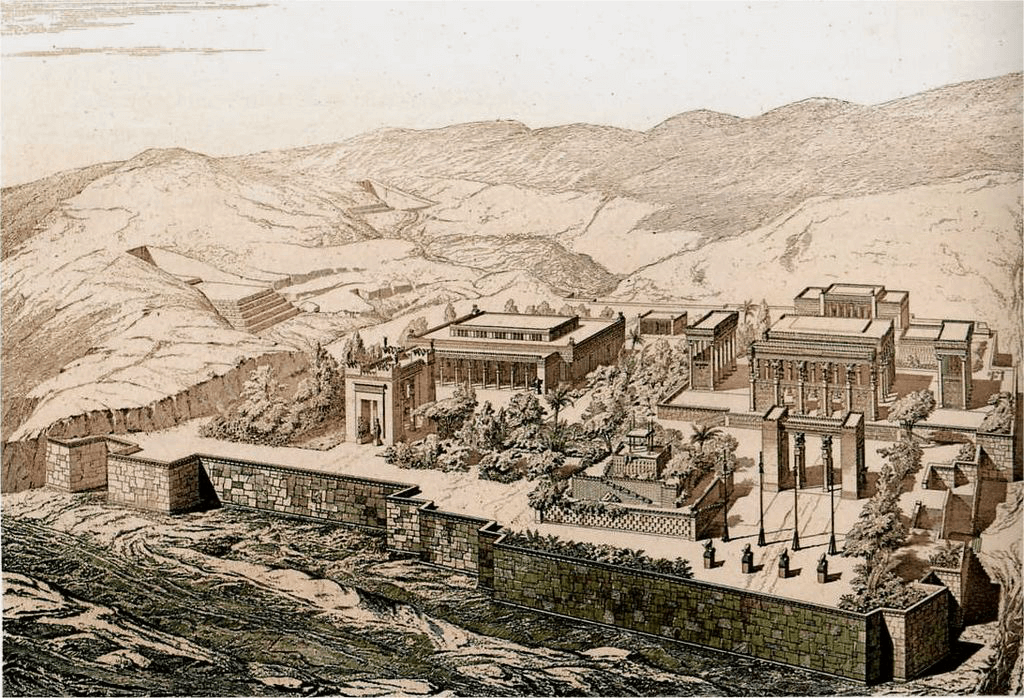
Persepolis - Charles Chipiez (1835-1901)
The city of Persepolis was originally built by the Persian king Darius I and through the successive reigns of Xerxes I and Darius III it was built up to be one of the grandest cities ever created, probably on par or if not grander than Babylon itself.
Its construction was a feat of engineering in and of itself. Constructed as a terrace on a mountaintop this city could be viewed from miles around and was a clear symbol of Persians dominance in the region. In order to construct this city Darius I and his engineers literally cut off the top of the mountain and built a massive city in its place.
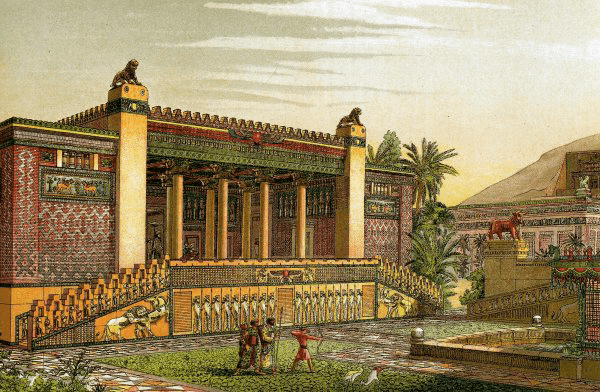
Darius I Palace at Persepolis - Charles Chipiez (1835-1901)
Contrary to popular belief the Persians did not use slave labor in the construction of Persepolis. Darius I, like Cyrus the Great believed in paying for honest work and did not take slaves like always reported.
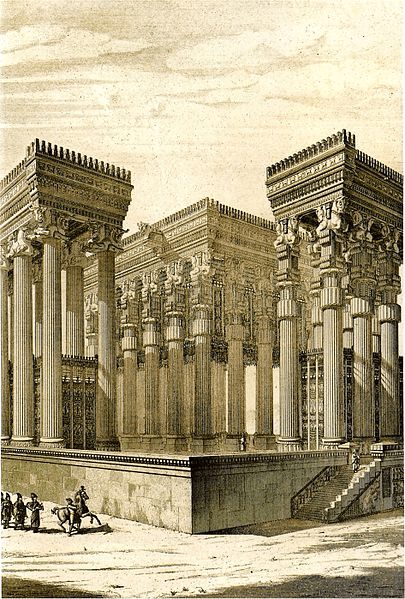
Persepolis Reconstruction - Charles Chipiez (1835–1901)
Persepolis Structures
Apadana
See Apadana
The Apadana was a massive structure that was built for entertaining audiences at Persepolis.
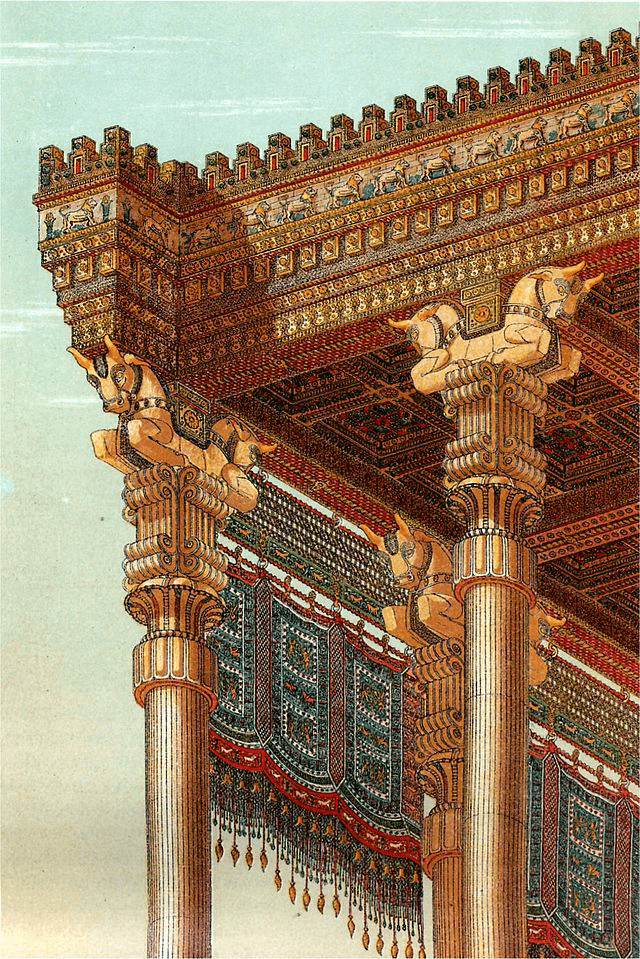
Persepolis Apadana Reconstruction - Charles Chipiez (1835–1901)
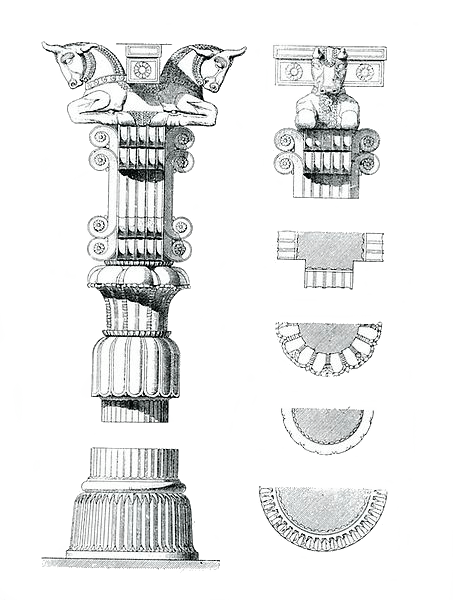
Persepolis Column Design - Pascal Coste, Emile Oliver & Eugène Flandin (1851-54)
Alexander the Great
However, following Alexander the Great's conquest of the Achaemenid Persian Empire, the city was burnt down by Alexander and his army following a massive drinking binge. Upon entering the city after their victorious campaign over Darius III and plundering its gold reserves and sending them back to Macedon, Alexander was rumored to have been told by an Athenian prostitute that Alexander should raze Persepolis to avenge all the Persians had done to the Greeks over the years.
Leading the way, Alexander and his friends set fire to the great palaces and the rest of his army followed suit and burnt the city to the ground. Some say the fire started naturally. The fire that Alexander and his friends caused was so intense and so destructive that the city itself was never attempted to be reconstructed. In fact it was not until the 1600's that people would discover charred pillars on the mountain top and realize what had happened here.
Encyclopaedia Britannica - Encyclopædia Britannica Eleventh Edition, Vol. 2, Page 376
- Achaemenid Settlements
- Arbela
- Armavir
- Athens
- Babylon
- Bactra
- Behistun
- Byzantium
- Celaenae
- Chach
- Cyme
- Cyropolis
- Dahan E Gholaman
- Dascylium
- Doriscus
- Ecbatana
- Eion
- Gabae
- Ganzak
- Gordium
- Greek Settlements
- Halicarnassus
- Hecatompylos
- Herat
- Hyrba
- Issus
- Istakhr
- Jerusalem
- Maracanda
- Myndus
- Nahavand
- Paishiyauvada
- Panjakent
- Pasargadae
- Patigrabana
- Persepolis
- Rhaga
- Sardis
- Sestos
- Susa
- Takht E Soleyman
- Taxila
- Tepe Sialak
- Tyre
- Ulug Depe